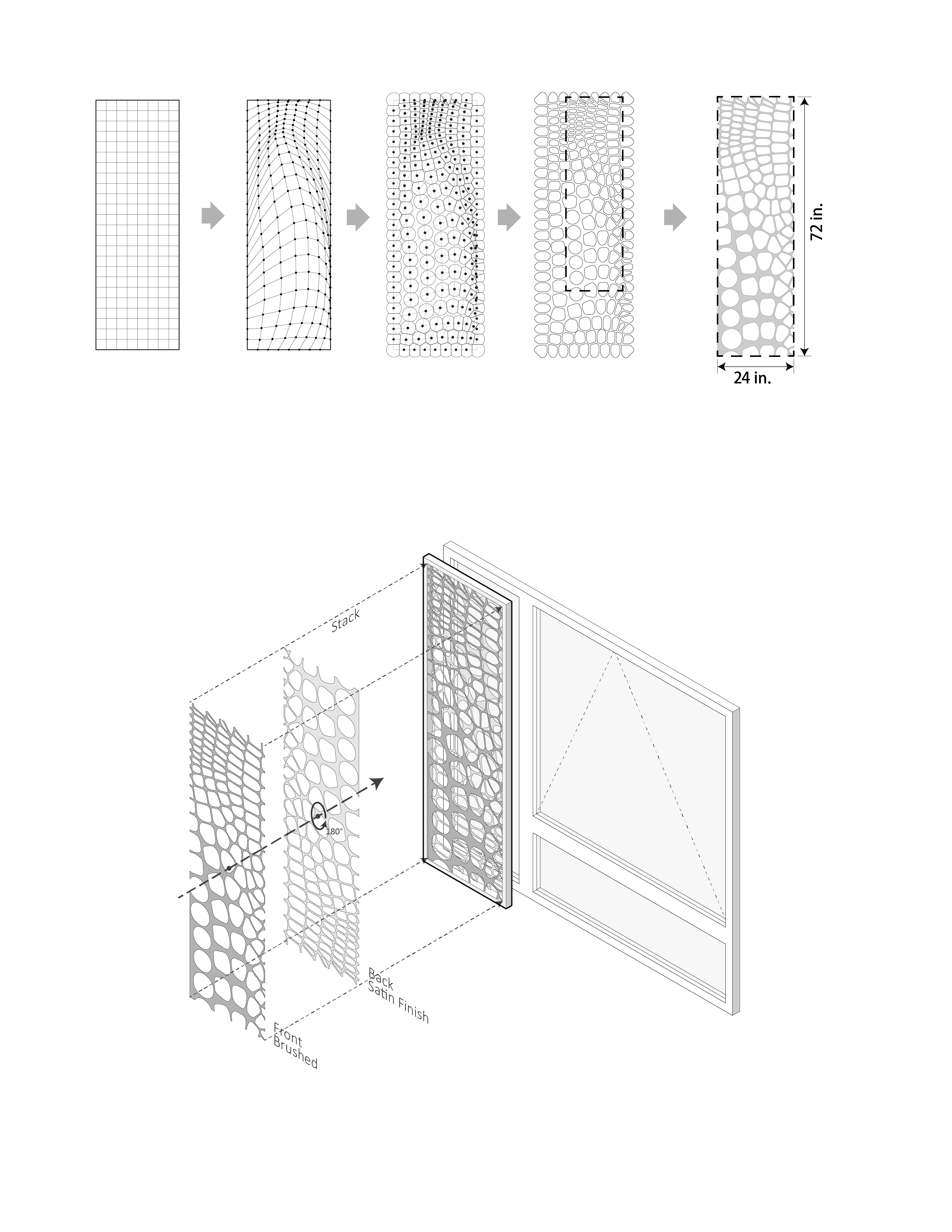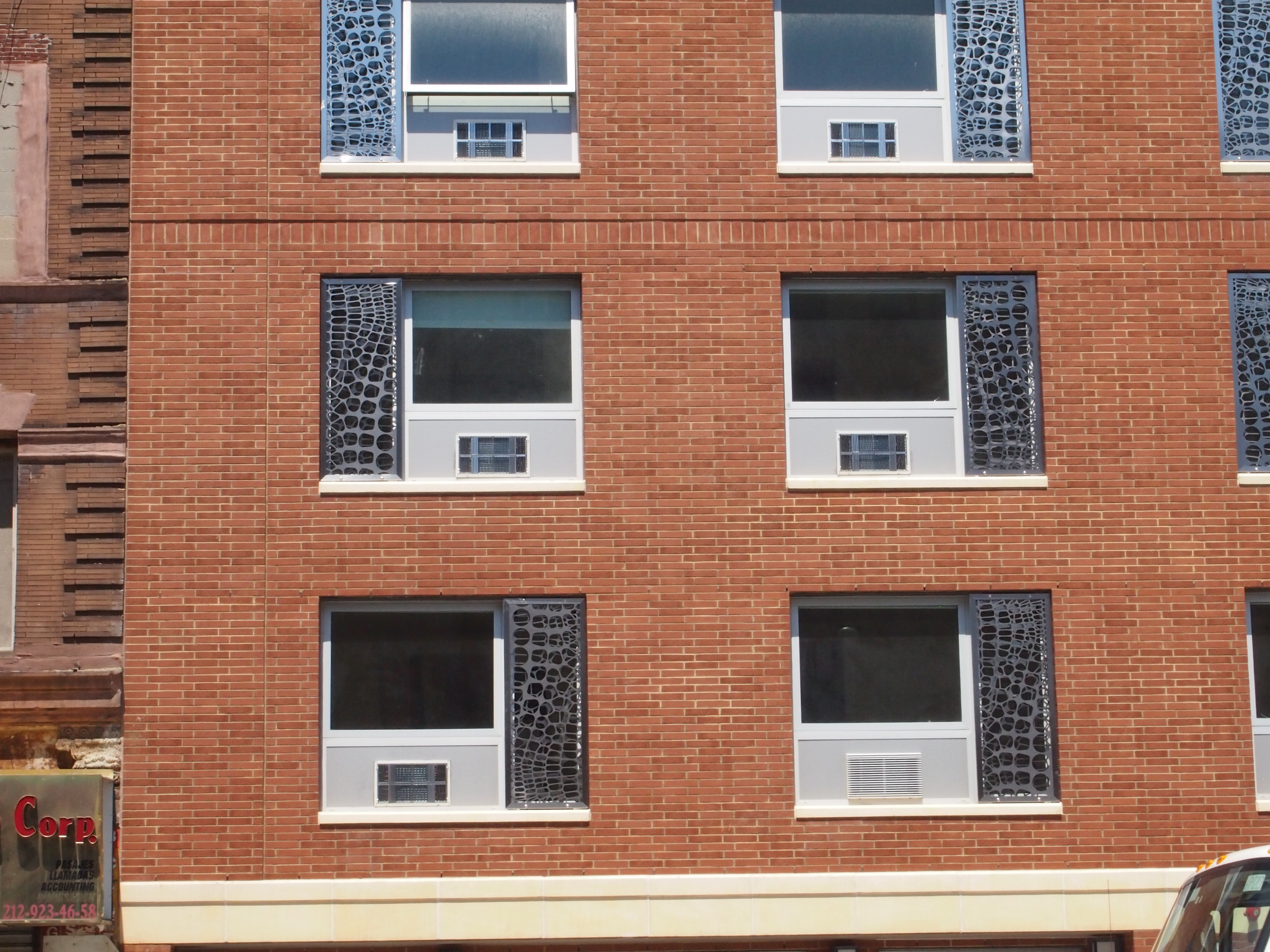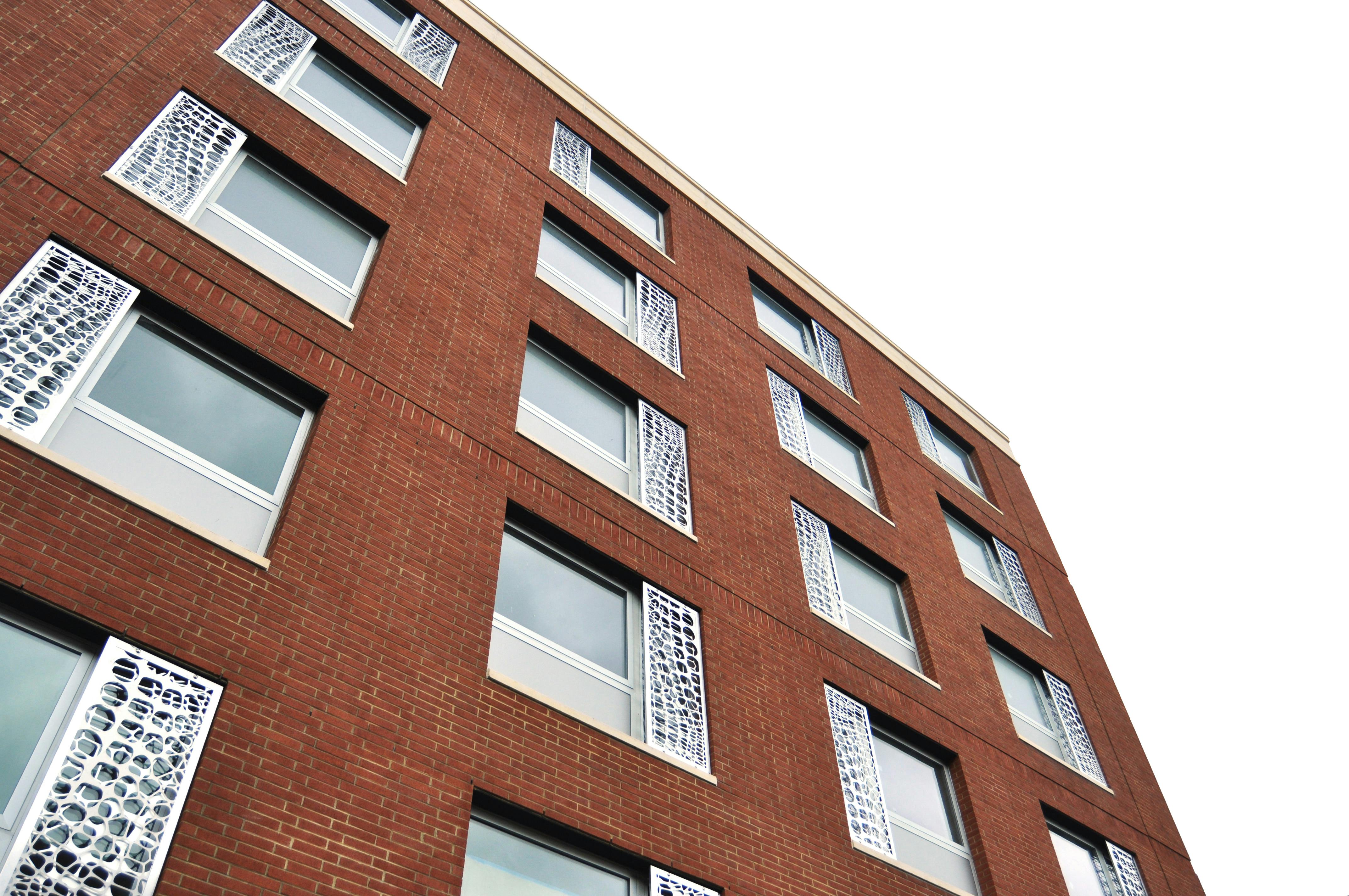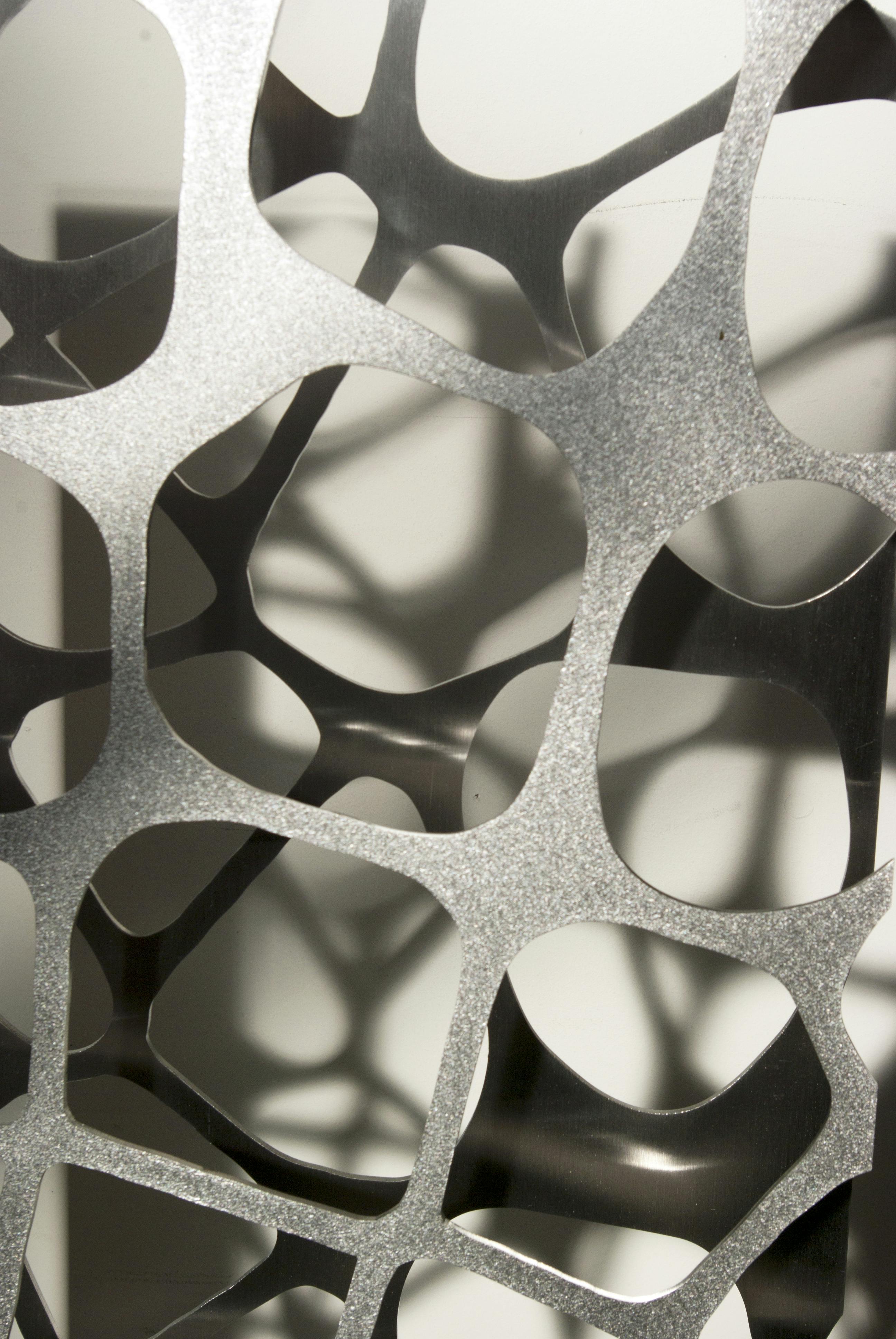.jpg?auto=compress%2Cformat&crop=center)

Diagram showing the composition of the panel openings
The outermost layer reflects the materials, scale, and detailing of the surrounding architectural character. The second layer is revealed in the window openings in a series of subtle shifts along the facade.
Viewed from a variety of angles, the composition of these layers will vary the building’s aspect over time, reflecting the variety and complexity of urban context.


(Left) Kitchen (Center) Living Area (Right) Interior window view
The two layers also support this program: the first provides a sense of belonging while the second acts conceptually as a filter, providing both contact with and protection from outside influences. In this way, the building is designed to support both its program and its urban context.

